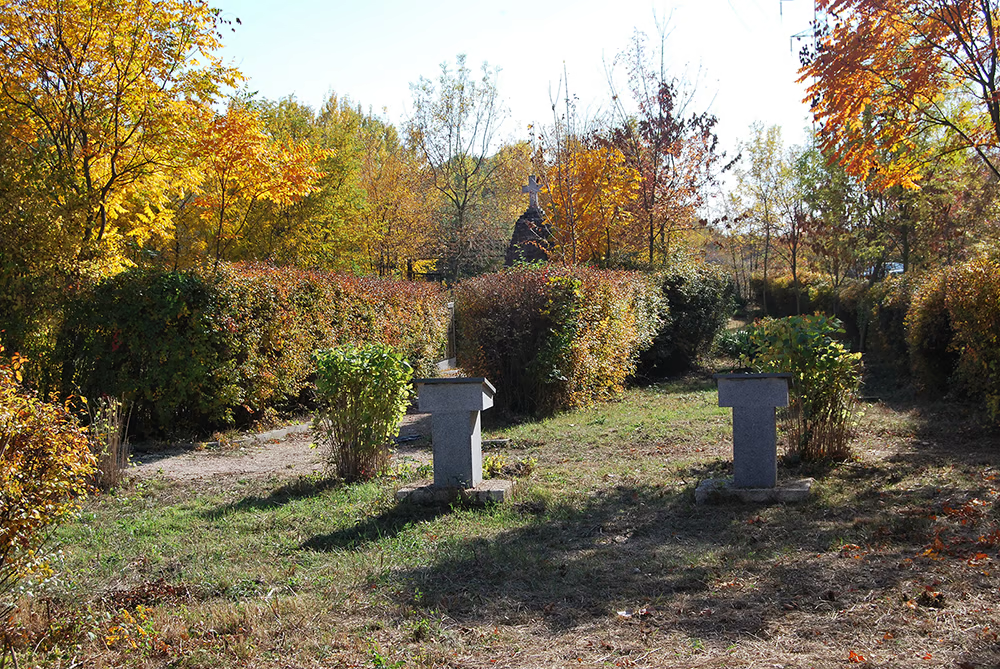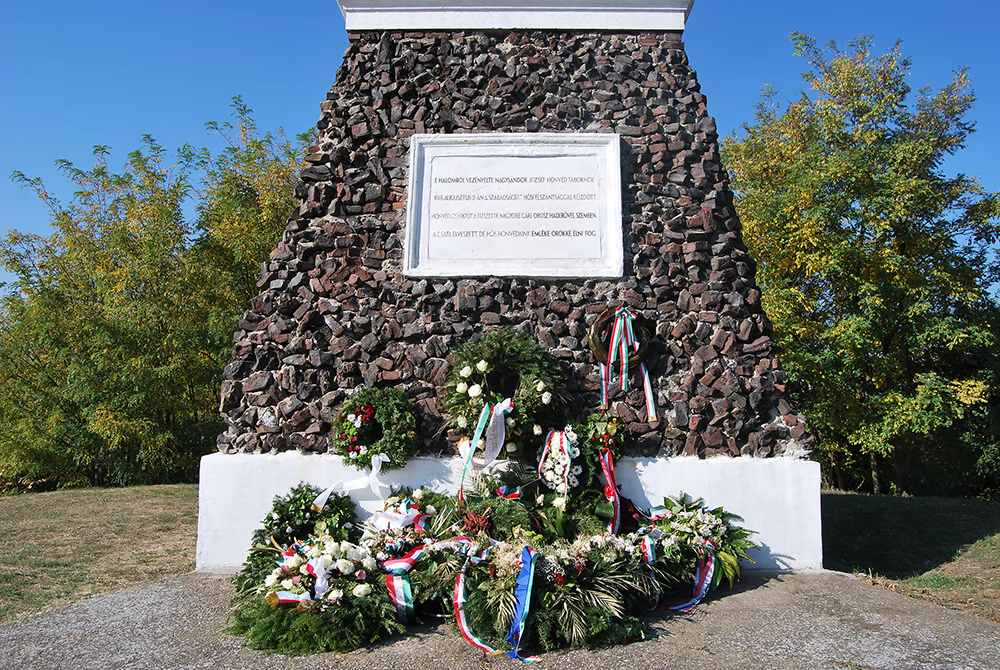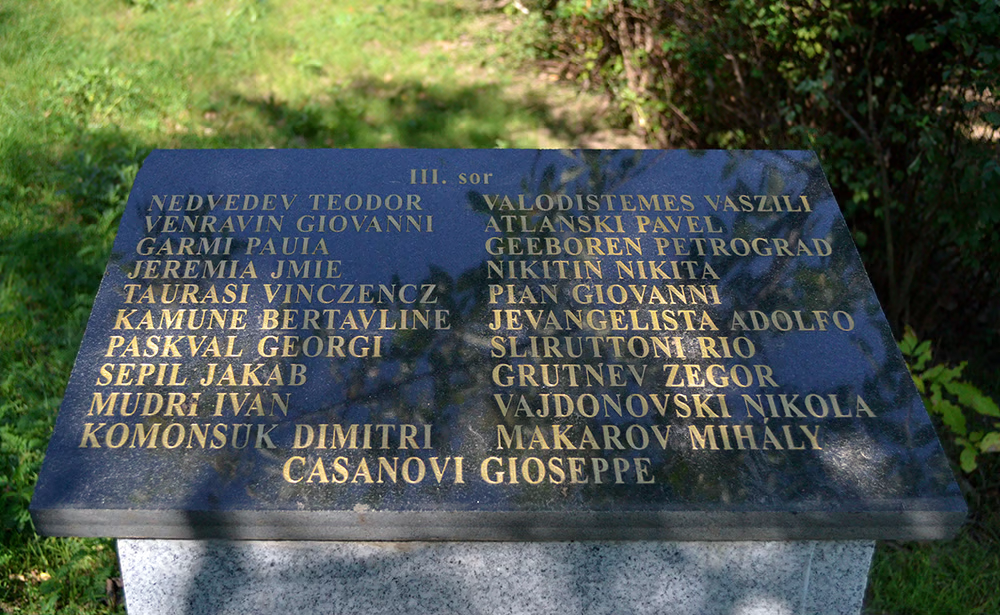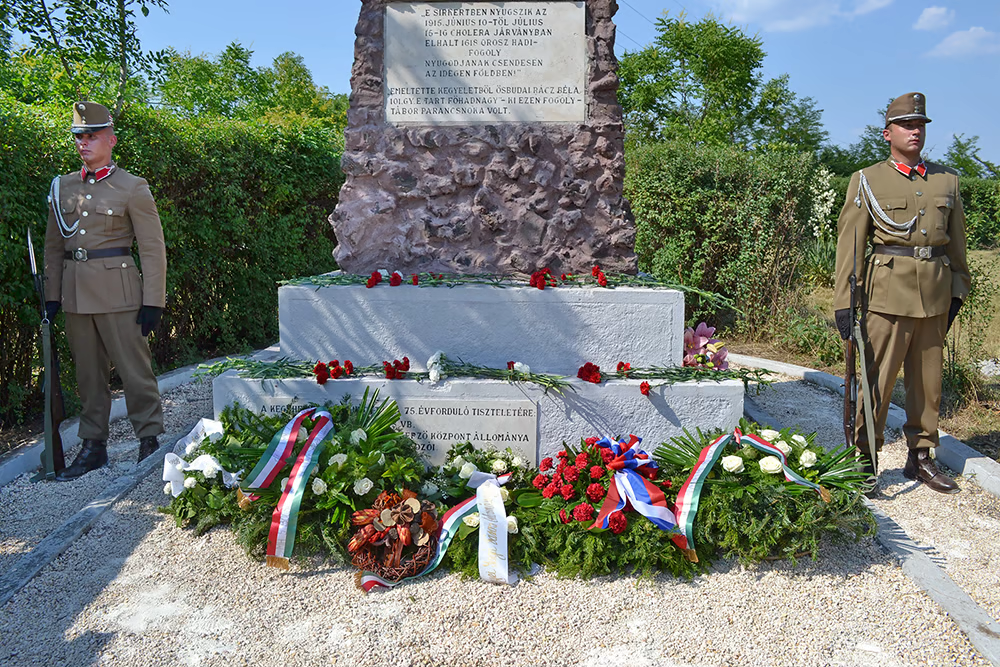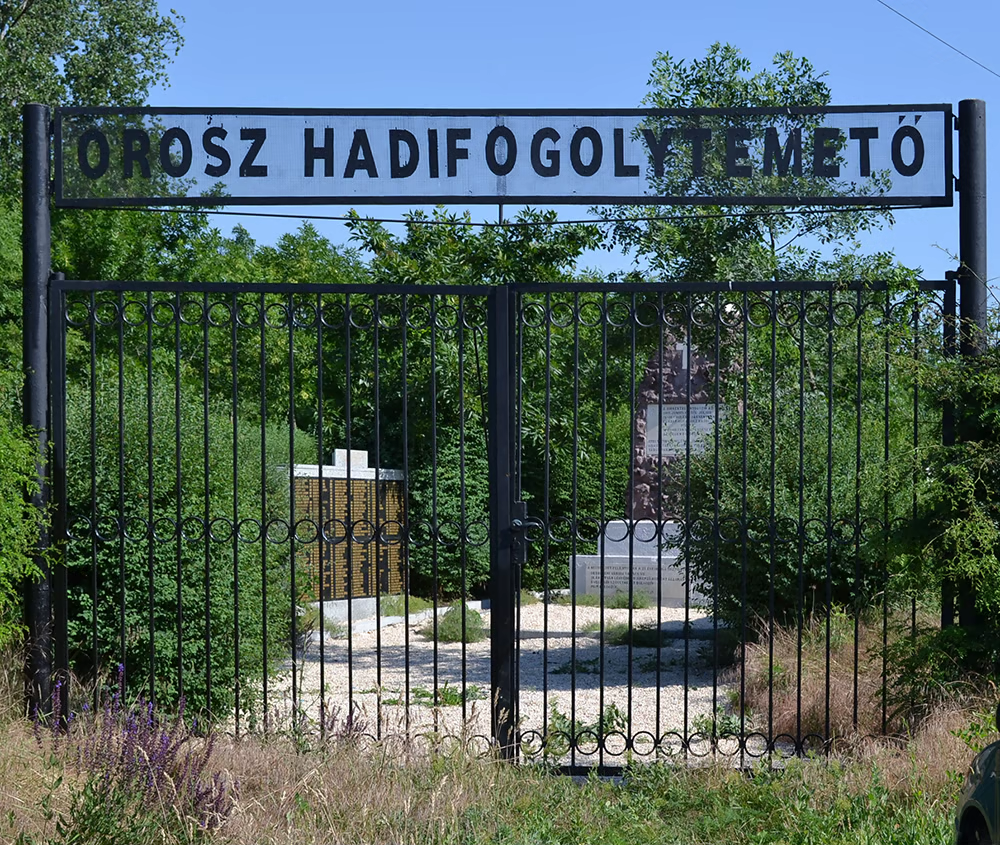History
The cemetery for Russian prisoners of war, who were kept in the nearby brick factory and who died of cholera, was set up in summer 1915 on the pasture of Köntösgát, on the western side of Debrecen, on the northern side of the main road to Hortobágy. The death toll of the epidemic, which raged for nearly a month, came to 1,500; the fenced off burial ground was expanded in 1917/1918 for more victims of infectious diseases. The bodies of soldiers, including Hungarian nationals, exhumed from the temporary burial places of military hospitals that operated in the inner areas of the town found their final resting place here in 1925.
Aerial photographs: Balázs Lévai - Compiled by: Csaba Imre Ilyés - Made: March 2015. - Nov. 2018
The first rail carriage transporting Russian prisoners of war to Debrecen, the large hinterland town during WWI, arrived here 103 years ago, on 14 October 1914. According to the agreement between the municipality and military leadership, the disinfection and medical observation of those arriving from “areas infected with war epidemics” were carried out on the premises of the brick factory on Balmazújvárosi Road and the Lime-sand brick factory in the environs of Diószegi Road, while some of the officers were tended to at the hospital of DEMKE (South Hungarian Cultural Union). The thousands of POWs transported here were typically taken to the bathing and observation points from the MÁV railway station through the streets in the town’s inner areas. According to the surviving data, ca 6,300 prisoners crossed through the town’s public areas from 5 to 8 April 1915.
The civil authority of Debrecen expressed concerns about diseases carried into the town from the arrival of the very first dispatch of prisoners. They took organisational measures with the aim of obstructing the outbreak and spreading of a potential epidemic, while trying to locate the quarters maintained for the POWs. The town’s leadership asked the garrison headquarters on several occasions to “stop taking POWs on foot on the streets our town’s inner areas […] in order to ensure public health safety”. It soon transpired that the concerns about the threat of an epidemic were not without foundation, since cholera broke out among the Russian POWs in June 1915, i.e. in the eighth month after the arrival of the first groups. The epidemic spread like wildfire, infecting the more than 10,000 POWs enclosed in the camp on Balmazújvárosi Road within a matter of days. In order to safely dispose of the bodies – expected to be a large number –, a new cemetery for the victims of the epidemic was delineated near their camp, i.e. to the northeast of the 1949 Nagysándor obelisk memorial standing on Kokasló Hill on the pasture of Köntösgát. The first burial took place on 4th June, and the burial of one body had to be organised every day until the 10th June, and as many as 150 on the 13th. The most devastating day was the 16th: 330 POWs died of the disease. The total death toll of the epidemic, which ended at the end of June, was 1618. Their burial places comprised 59 mass graves – max. 50 bodies in each – and a few individual tombs. The identities of more than two thirds of those laid to rest here are still unknown; the – often incomplete – names of only 498 of the deceased could be identified based on the death certificates subsequently issued in December 1917.
The lethal epidemic, which posed a great threat to the civilian population of the town, was successfully contained and eliminated within the hermetically closed camp and the hospital set up for the infected. While the infection sporadically appeared in other places too, thanks to the administering of inoculations and the localisation of smaller centres of the infection, Debrecen did not need to be quarantined, therefore, the markets operated by those arriving from the neighbouring settlements and thus the food supply continued without interruption. The chief medical officer of Debrecen, Dr Kálmán Tüdős, announced to the ‘epidemic committee’ of civil and military members on 6th July 1915 that no cases of cholera infection had been reported among the civilian population for the previous 5 x 24 hours, hence as stipulated by law, the epidemic could be declared as having ended. To be on the safe side, the news was officially communicated to the local inhabitants four days later in the Debreceni Közlöny (Debrecen Bulletin), where they also warned them to take the necessary precautions. In the case of the POWs, who were still quarantined, the day officially declared as the end of the deadly epidemic was 16th July.
The cemetery for POWs and the victims of epidemics on Köntösgát, which was closed down immediately after the last burial of cholera victims, was reopened two years later in the extension attached to the cemetery’s northwest edge, as it was needed again from 8th September 1917 to 11th November 1918 as a burial ground for victims of an epidemic, although this time bodies were transferred here from temporary cemeteries (e.g. 208 bodies of victims, known by name, from the Salvator military hospital) and were entombed in individual graves. Lajos Zoltai carried out the survey of the cemetery in 1919. In his report, he stated that besides the Russian prisoners, Italian, Serbian and Romanian prisoners as well as those from internment camps and civilian labourers were buried in the cemetery’s extension. The cemetery was then closed again and later reopened after 1925, when the bodies of “525 heroic dead and Russian POWs [were transferred here] from the barracks cemetery in Nyulas”, which had been permanently closed down, and placed in mass graves. Hence, the cemetery, where POWs of many nationalities were buried, also became a place of tribute for Hungarian heroes.
The cemetery remained at the centre of attention until WWII: wreathing ceremonies were held regularly at the memorial erected there by the commanding officer of the prisoner of war camp, reserve lieutenant Béla Rácz, at his own expense as a tribute to the memory of all resting there. However, the political changes after the war doomed this military memorial, like many others, to oblivion and it was only ‘rediscovered’ in the late 1980s, when it was renovated thanks to the efforts of the defence forces, the town’s leadership and civil organisations. Most recently, it was renewed by the Russian Federation as a tribute its own heroes on the occasion of the 100th anniversary of the cemetery’s opening. The Hungarian defence forces and dedicated Hungarian civilian scholars paid homage to those resting in the cemetery with the publication of the volume titled Orosz hadifoglyok temetője Debrecenben (Cemetery of Russian Prisoners of War in Debrecen) in 2015; the book included the thus far most complete list of those entombed here.
Gallery


